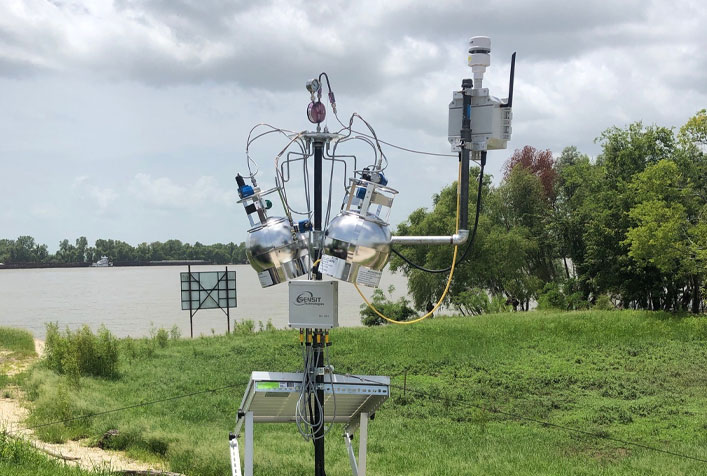Support for EPA Investigation of a Clean Air Act Violation

Project Brief
The Challenge
After discovering that a Denka Performance Elastomer Facility in Louisiana was emitting chloropropene in violation of the Clean Air Act, the U.S. Environmental Protection Agency’s Region 6 referred the matter to the U.S. Department of Justice. To support the case, EPA’s Office of Enforcement and Compliance Assurance then contracted with ERG to assist OECA in designing an investigation and monitoring chloropropene emissions around the facility.
ERG's Solution
For this investigation, ERG’s project team used SPods to measure total volatile organic compound (TVOC) emissions from the facility, as well as meteorological conditions. SPods are an EPA-designed next generation emissions measurement technology that are automatically triggered to collect air in a specialized sampling canister as soon as a specified TVOC threshold is exceeded. ERG’s air quality laboratory then analyzed these air samples to determine the chloroprene concentration in the ambient air around the facility during threshold exceedance events. ERG used the meteorological data, including wind direction, to establish a link between chloroprene measurements and the local climate, enabling us to determine which direction the chloroprene originated from. The analysis showed that TVOC concentrations were well above measured background concentrations, providing evidence that these emissions constituted a “release event” under the Clean Air Act. EPA subsequently issued a preliminary CAA injunction requesting that the court order Denka Performance Elastomer LLC to implement significant pollution controls to reduce chloroprene emissions.
Client
U.S. Environmental Protection Agency